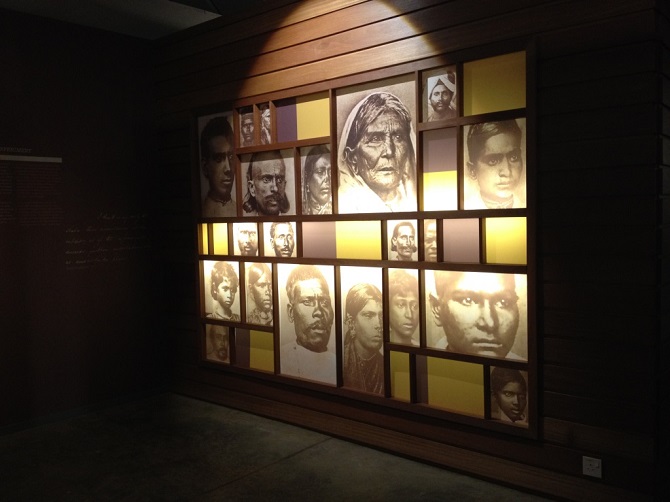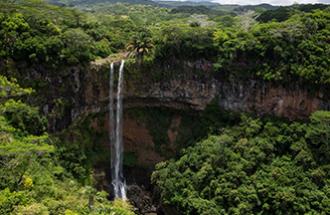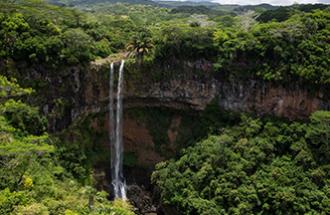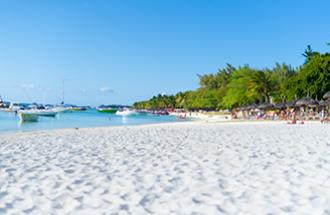Port Louis, Capital of Mauritius
Port Louis, capital of Mauritius
Port Louis, the cosmopolitan capital city of Mauritius was founded in 1735 by the French governor and pioneer Bertrand-François Mahé de La Bourdonnais. Located on the Northwest Coast, Port Louis is the administrative and business capital of the island.
Buzzing with activity during the day, the city is full of cultural and historical treasures that should not be missed. Beyond the central market, which is a focal point for those who want to feel close to the soul of Mauritius, are many historic sites including the Champ de Mars - the oldest race course in the southern hemisphere.
What to see?
La Place D’Armes
At the historical centre of the city is the Place d’Armes surrounded by Bottle Palm trees and several statues, and is the main square connecting the seafront to Government House.
Statue of Mahe de Labourdonnais
This statue of one of the founding fathers of Mauritius is situated at the entrance of the Place d'Armes and is a symbol and reminder of our French heritage.
Government House
Government House, built at the time of Governor Nicolas de Maupin (1729-1735), is a splendid building and one of the oldest buildings in Port Louis. It was recently renovated and is the official address of the Parliament of Mauritius.
Port Louis
The municipal theatre of Port Louis was built in the nineteenth century and is one of the oldest in the Indian Ocean. Decorated in a classic London theatre style, it can accommodate around six hundred spectators.
Fort Adelaide
Located on a hill overlooking the city and harbour, the Citadel of Port Louis (Fort Adelaide) is a fort that was built between 1834 and 1840 to guard the city against riots during the abolition of slavery. Today local and international concerts and artistic shows are performed there and it is definitely worth a visit for the stunning views from this vantage point.
Aapravasi Ghat
Classified as a World Heritage site by UNESCO, Aapravasi Ghat (Immigration Depot in Hindi), honours the thousands of indentured labourers who arrived from India after the abolition of slavery and who finally settled on the island. This is the place where the immigrants first landed.

BRIC
The Beekrumsing Ramlallah Interpretation Centre (BRIC) is located on Wharf Street, where the indentured labourers first disembarked. The centre is dedicated to their indenture and displays objects recovered during archaeological excavations, as well as 22-inch touch screens giving information about this period.
A chilling experience is to spend time inside the replica of a ship like the one these contracted workers had to endure for approximatively six weeks. A 10-minute movie shows testimonies of their descendants. Also, one can admire pipes, phials that medicine bottles (from the hospital on the site), leftover gin and rum bottles, probably drank by British officers, all remains found during archaeological excavations at the Aapravasi Ghat. Other preserved relics include the slipway that existed on that site between 1846 and 1856.
Natural History Museum
Created by the Natural History Society of Mauritius, the museum opened its doors to the public in 1842. It currently conserves 35,000 specimens displayed in four permanent galleries.
Mauritius Postal Museum
Located in a beautiful old stone building next to the Caudan Waterfront, you will be warmly welcomed by the hosts of this Museum which displays stamps, first day covers, and many other interesting objects marking the history of the Mauritius postal service. A range of stamps, first-day covers, stamp albums, books, key rings and other souvenirs are on sale at the Mauritius Postal Museum.
Blue Penny Museum
Mauritius is as well known for the extinct dodo as it is for its rare and expensive Blue Penny stamp. An original issue can be seen at the Blue Penny Museum in Caudan. This beautifully decorated museum is also home to other precious collections that represent the mixed historical and cultural heritage of Mauritius.
The Bank of Mauritius Museum
The Bank of Mauritius Museum is located in the country’s central bank original premises on Sir William Newton Street, Port Louis. The journey starts with the Arab period (12th century) and takes us across the meanders of the centuries to present-day Mauritius. Visitors have the opportunity to look at coins minted abroad by the then-colonial governments for use in Mauritius, and at gold or silver coins, like Arab dinars or British Indian mohur, which were not in use in Mauritius but nevertheless found their way to our shores nonetheless by way of the flourishing trade in the region during colonial times. The museum is open on weekdays only from 9:30 till 16:00; entrance is free for the time being. Guided tours are available to groups on request.
Marie Reine de la Paix
Overlooking the city of Port Louis and tucked into the side of Signal Mountain is the Catholic Church Marie Reine de la Paix. If you are ready to climb the 82 steps to reach the monument, the view of the city and of the sea from the Church grounds is stunning. The gardens surrounding the church are beautifully maintained and are a great spot for picnics and a place to relax away from the hustle and bustle of the city Paix.
Things to do
The Caudan Waterfront
The Caudan Waterfront is a must for those looking for the top designer brands at bargain prices. At this bustling, lively seafront you will find numerous restaurants serving a wide range of cuisines. Take a visit to the artisanal shops and only library in Caudan and browse through the contents of the shelves… You are likely to find a treasure of Mauritian art and literature.
Champ de Mars
From March to December it is the ideal place to witness lively horse races during weekends. Very popular activity in Mauritius. A family venue where a colourful and friendly crowd celebrates each race on the race course.
Museum of Photography
At this unique Museum of Photography, you will travel through time with the cameras and thousands of photos passionately collected by the photographer Tristan Breville.
Rajiv Gandhi Science Centre
The Rajiv Gandhi Science Centre is both a leisure park and a fun scientific track located on the outskirts of Port Louis. Children and youngsters will be able to participate in different exhibits and activities. The goal is to show children in a fun way the basic principles of mechanics, physics of sound, light and waves.
China Town
In the 1780s, thousands of voluntary Chinese migrants set sail for Port Louis from Guangzhou on board British, French, and Danish ships and found employment as blacksmiths, carpenters, cobblers, and tailors. They formed a small Chinatown, the ‘Camp des Chinois’, in Port Louis.
Today the Chinese still occupy an important position in the life of Port Louis, and a trip to Chinatown will immerse you in the rich commercial life of the Chinese community. There are plenty of genuine Chinese restaurants and busy grocery stores, stocking Chinese delicacies, to choose from, and if you’re lucky enough you’ll catch the Chinatown Food and Cultural Festival held annually.
Plaine Verte
The main square of Plaine Verte is loved by tourists. Try the Mauritian “gato piman” and other Indian and Muslim cakes, drinks and food on offer.
A passage through time
There are numerous historical sites in Port Louis and discovering them is like a treasure hunt.
Take a walk through the neighbourhoods to see the old Colonial houses and the “Casernes centrales” where the police headquarters are located. If you look closely at the outside walls surrounding the line barracks, you’ll notice a wrought iron in the shape of an “S”, which was the sign of the French governor, Labourdonnais, who initiated its construction in the early mid-eighteenth century.
The same sign can be seen on the oldest remaining wall in front of the “Grenier” (formerly the loft of Mauritius, but today a parking), near the Windmill Museum at Caudan Waterfront, on the remains of the coral that once partially surrounded the sea in the port. There, be transported back in time as you take shelter in the shade of the city’s few remaining rare trees while you kids play on the Astrolabe.




